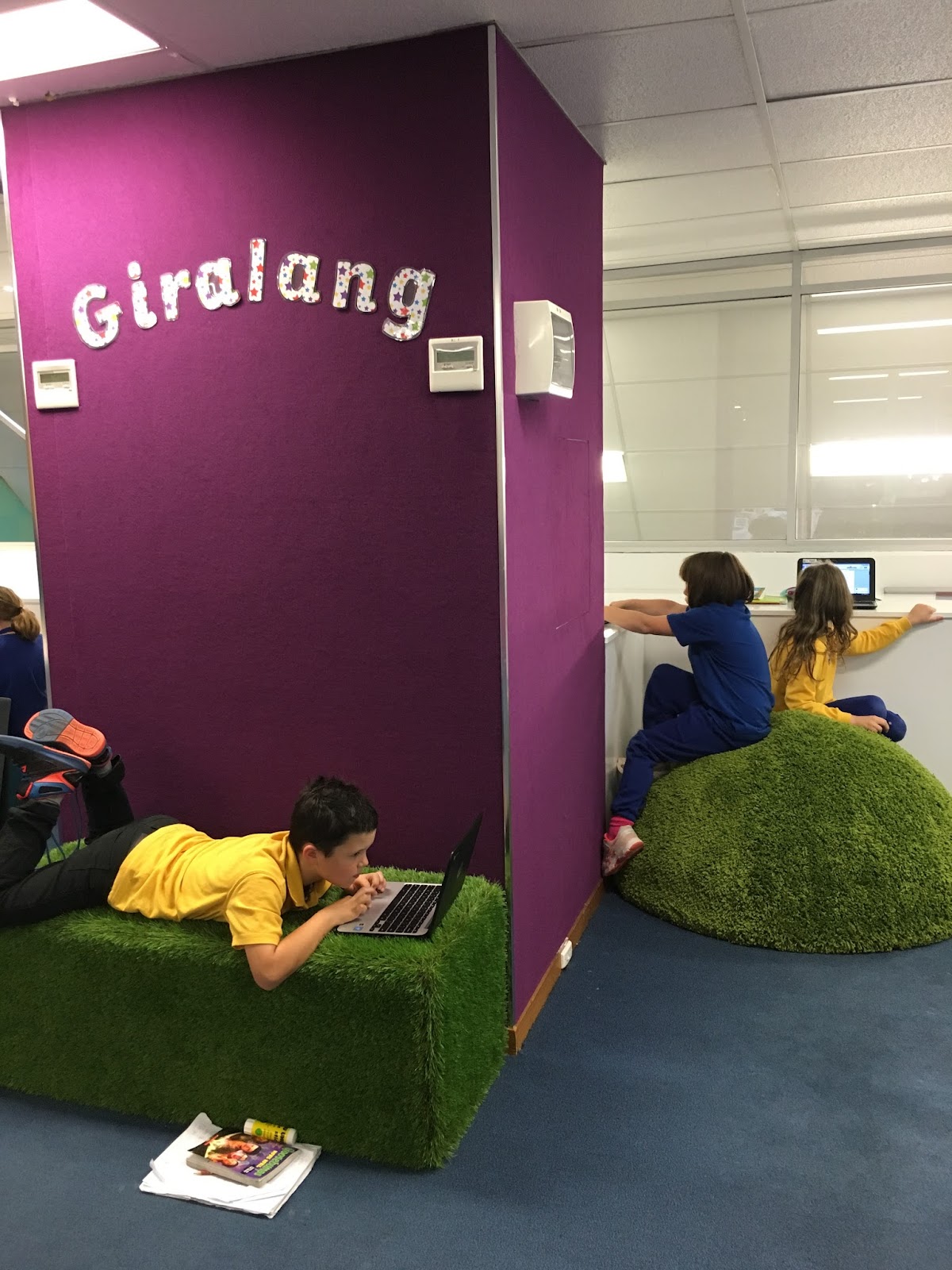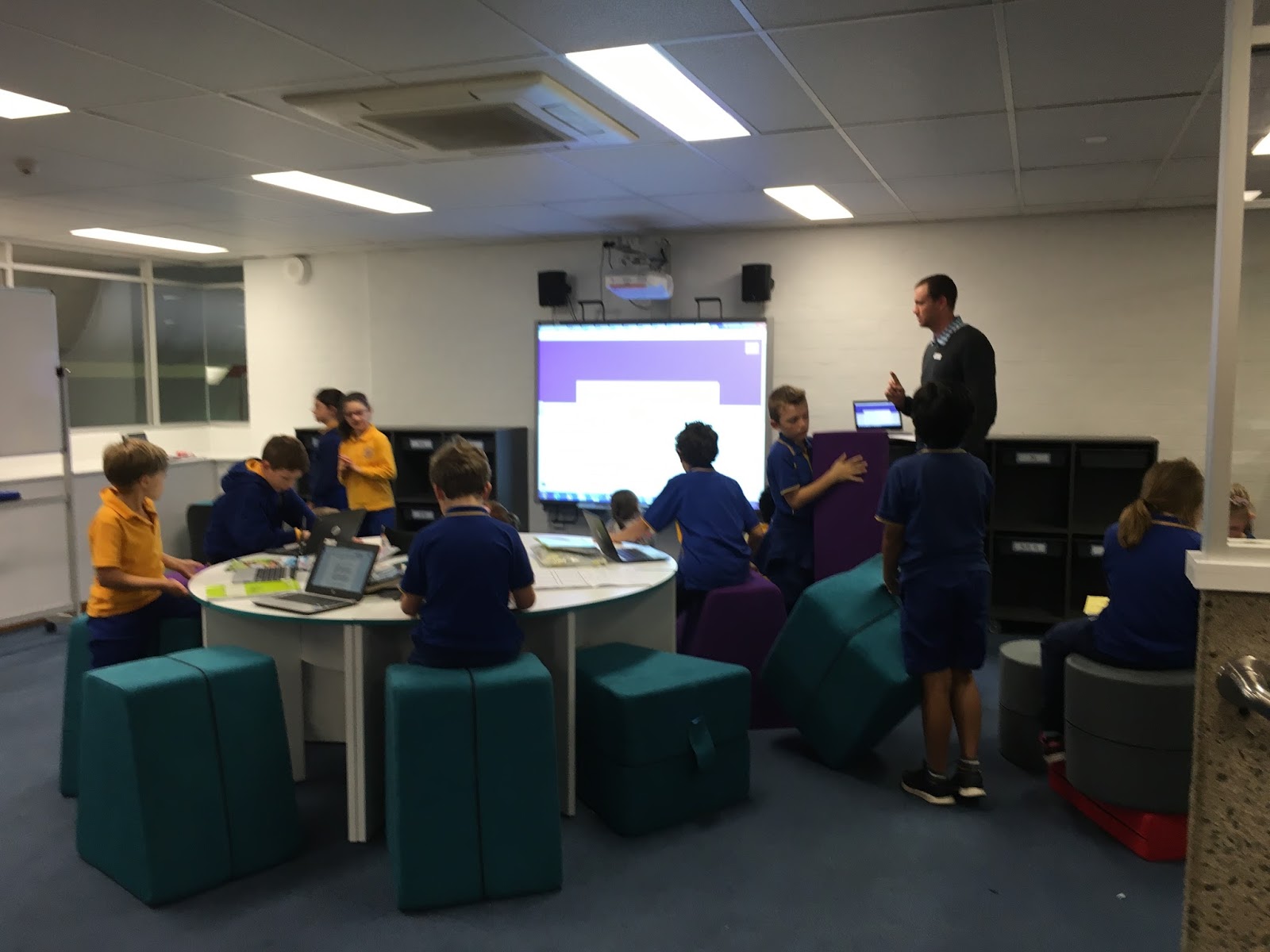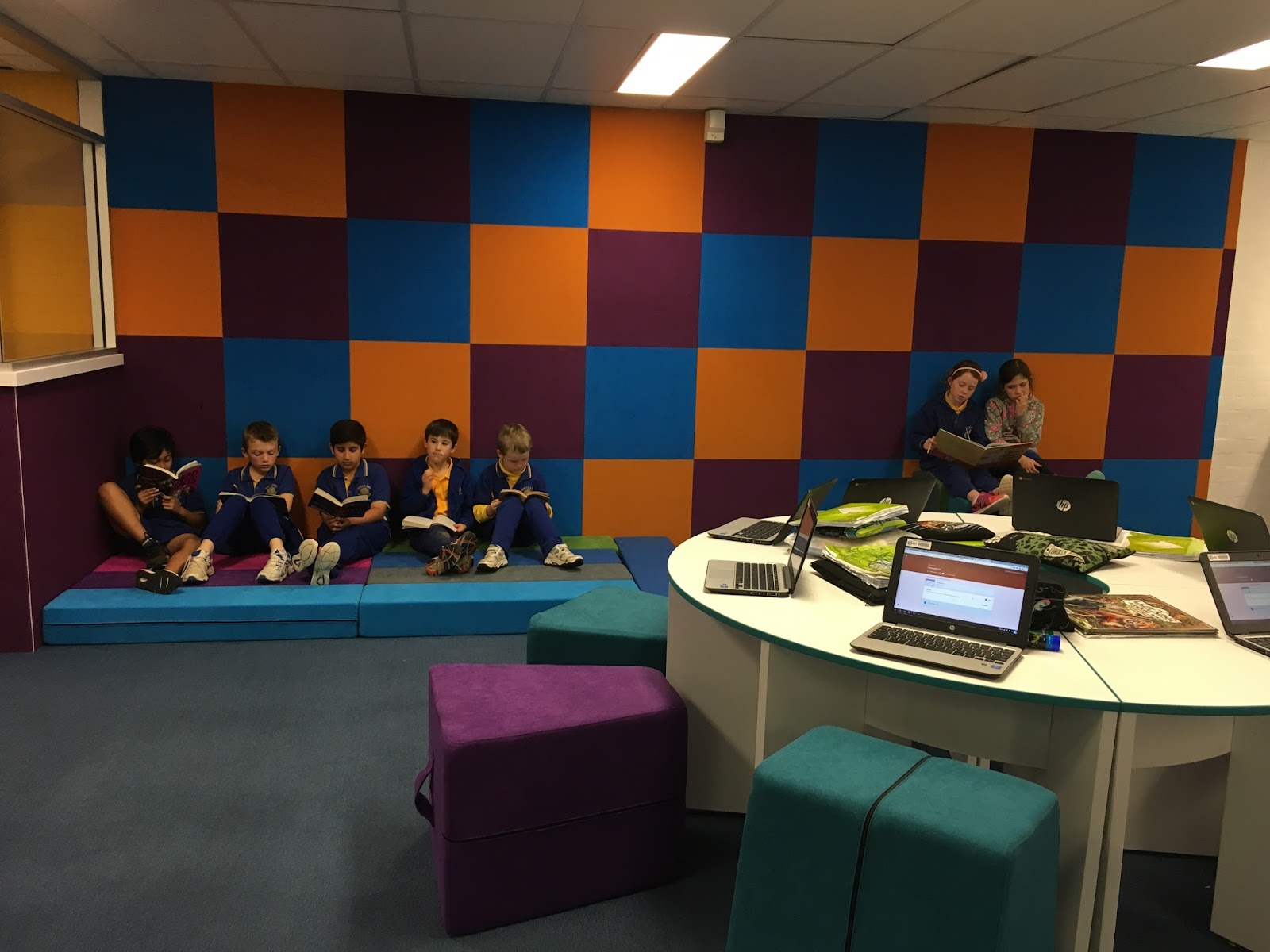Giralang’s streets are named after stars and constellations, so it was only fitting that Giralang Primary School’s new flexible learning space was called “The Cloud”.
As they started making plans to replace ageing technology and out-of-date computers, deputy principal Natalie thought it would be a good opportunity to apply new thinking to the design of a learning space that fit the school’s pedagogical approach. The old computer lab above the library was the perfect spot to build a new inquiry space.
 |
| The cloud includes a range of different learning spaces. |
The Design Process
Natalie and the other staff at Giralang Primary wanted to make sure that the space was useful for teaching and learning, but also comfortable and flexible enough to meet the needs of all students.
Drawing on research around ergonomics, neuroscience and student engagement, Natalie consulted with year 6 students, staff and furniture companies to come up with a space that suited a range of needs, but also provided flexible seating options and spaces for collaboration.
It is a BYOD area, well-equipped with WiFi and climate control, and it actually works well for noise control too. When I visited, there was another class working in the library , but neither group was disturbed by the other. Acoustic pinboarding and glass panels cut down on noise without making the space too claustrophobic.
 |
| Different colours textures add to the sensory experience. |
How do the students use the space?
At first, there were some parent concerns around ergonomics. Would children get bad posture or other health problems because they weren’t sitting at traditional desks? Natalie knew that this wouldn’t be a problem due to her research, but she has also noticed that the children are very good at self-regulation. They choose the seating option that suits them best at any given time, and use the furniture in unique ways. The furniture was specially selected to include the
seed ottoman, which provides a range of heights for users. We saw students using these in a variety of ways, and using them at the right height to make their activity (on the computer or otherwise) comfortable for them.
 |
| Students use cushions and blocks to change the height of their seat. |
The students at Giralang also make full use of the whole space. The ‘cabana’ is a good place for collaborative work, along with the seed tables and the cloud table; the campfire space makes it easy for quiet conversation and conferences; and the ‘jenga blocks’ make it possible for students to create their own spaces, as we saw with the row of boys who sat down to read and then later to use their Chromebooks, using the blocks as a kind of a lap table.
The furniture options have also been a hit with students with higher needs. The addition of grass-covered domes and blocks give them some sensory distractions while they read or complete tasks. Natalie told me that this was the most engaged that she’d seen some of these kids.
 |
| The 'campfire' area adds a quiet place for conferences and conversations. |
Why is the Cloud space important?
The Cloud offers students and teachers at Giralang Primary a space to immerse themselves in a quiet, flexible inquiry space. Classes will be able to book the space (through a Google form), and test it, perhaps bringing back some of these approaches to their own classrooms.
Another nice benefit of offering a more flexible space is encouraging movement. Giralang has introduced a ‘Giralang gets moving’ program to encourage kids to move more, but the availability of flexible computing options has added to that. Staff at Giralang noticed that the computer lab was encouraging more sedentary behaviour, as students ‘had’ to go to the computer lab at their allocated session and sit there for the entire time. Now, they can use their computers as needed, with lots of opportunities for movement in between. In the hour I spent with a year 3 class in the Cloud, I noticed that they changed position every time they changed activity. But they remained engaged and on-task.
But best of all, the Cloud has taken a single-use, outdated space and turned it into an engaging and flexible learning space. We’re excited to see how it will change the way students think and learn.


Comments
Post a Comment